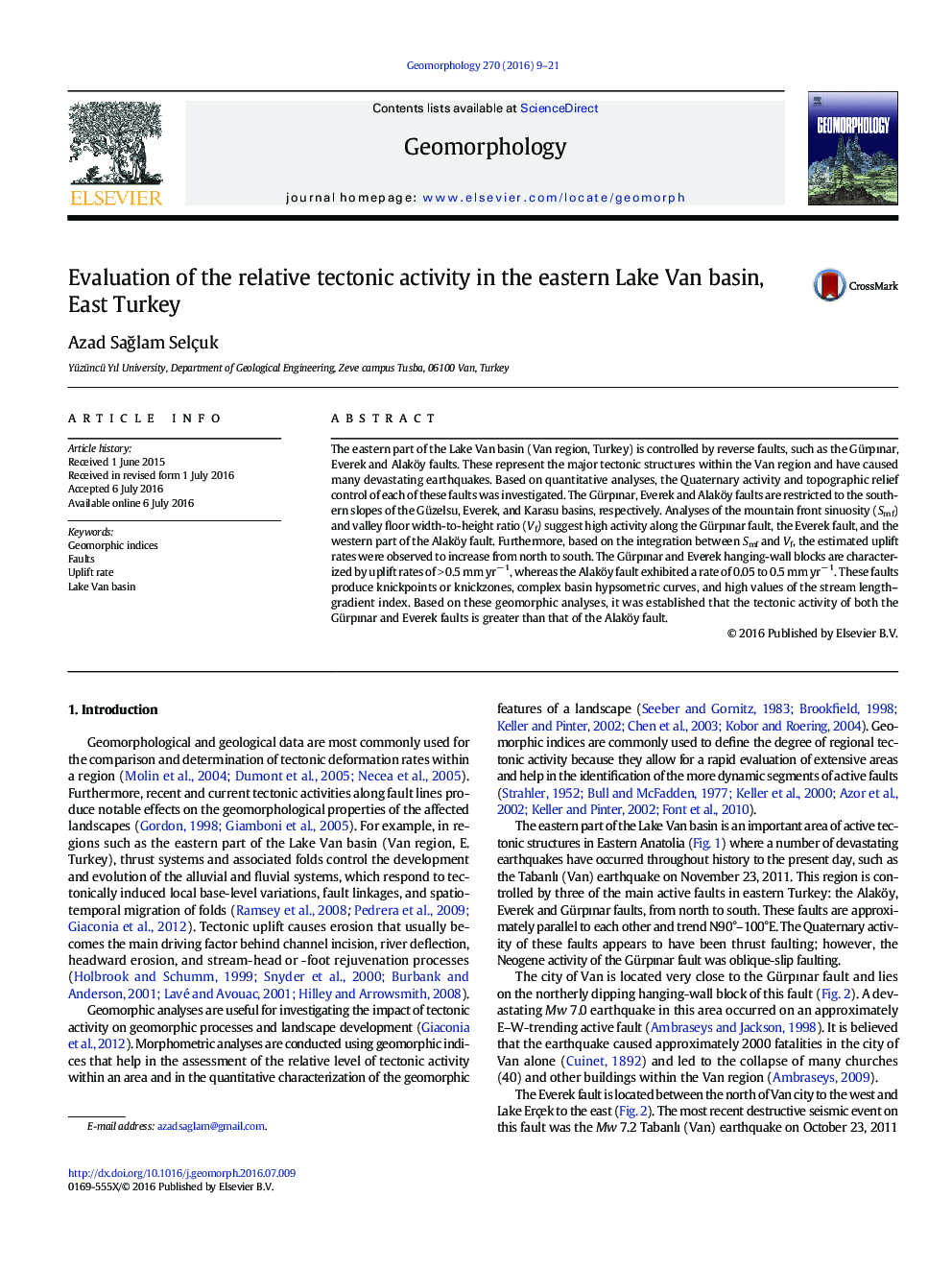| Article ID | Journal | Published Year | Pages | File Type |
|---|---|---|---|---|
| 4683891 | Geomorphology | 2016 | 13 Pages |
Higlights•Geomorphologic analyses were conducted on the eastern Lake Van Basin.•Quaternary activity of the three main faults was investigated.•Differential uplift rates of subbasins were established and related to fault activity.
The eastern part of the Lake Van basin (Van region, Turkey) is controlled by reverse faults, such as the Gürpınar, Everek and Alaköy faults. These represent the major tectonic structures within the Van region and have caused many devastating earthquakes. Based on quantitative analyses, the Quaternary activity and topographic relief control of each of these faults was investigated. The Gürpınar, Everek and Alaköy faults are restricted to the southern slopes of the Güzelsu, Everek, and Karasu basins, respectively. Analyses of the mountain front sinuosity (Smf) and valley floor width-to-height ratio (Vf) suggest high activity along the Gürpınar fault, the Everek fault, and the western part of the Alaköy fault. Furthermore, based on the integration between Smf and Vf, the estimated uplift rates were observed to increase from north to south. The Gürpınar and Everek hanging-wall blocks are characterized by uplift rates of > 0.5 mm yr− 1, whereas the Alaköy fault exhibited a rate of 0.05 to 0.5 mm yr− 1. These faults produce knickpoints or knickzones, complex basin hypsometric curves, and high values of the stream length–gradient index. Based on these geomorphic analyses, it was established that the tectonic activity of both the Gürpınar and Everek faults is greater than that of the Alaköy fault.
